Lluís Montaner
-
Lluís Domènech i Montaner was a contemporary of Gaudi who played an important role in defining the Modernista style of architecture. He was both a professor and a politician --- hence, a very influential man. For 45 years, he was the director of Barcelona’s school of architecture.
We were fortunate to view his two most famous works, the Hospital of Saint Paul and the Palace of Catalan Music (Hospital de Sant Pau and the Palau de la Música Catalana). Together, they have been designated a UNESCO World Heritage Site.
The Hospital de Sant Pau is four blocks north of La Sagrada Familia. It was a fully functioning hospital until mid-2009, when a modern replacement took over. Currently, it is being restored as a museum and cultural center:
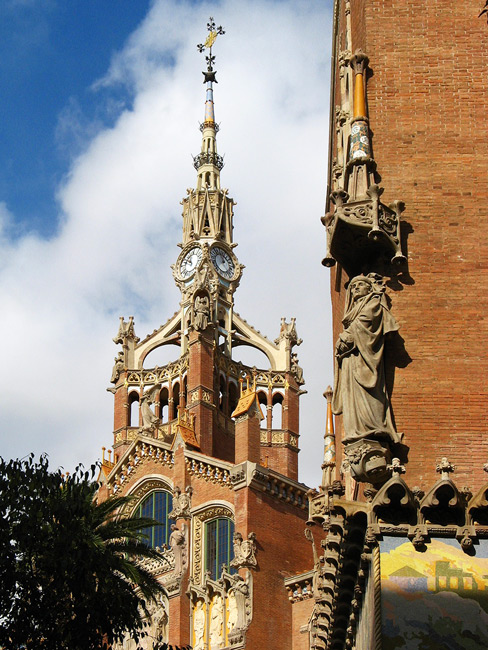
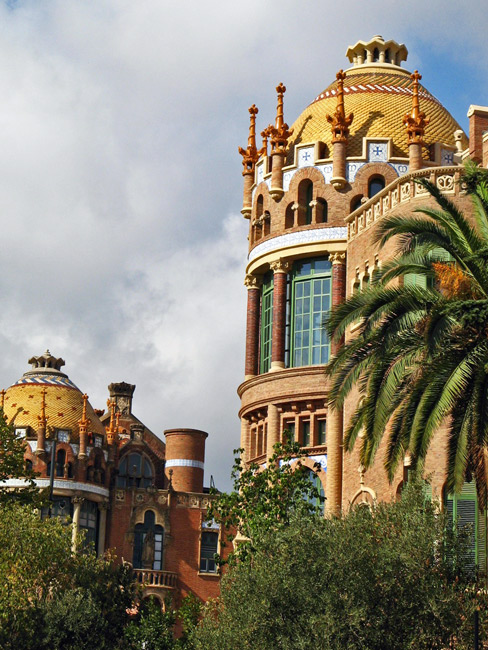
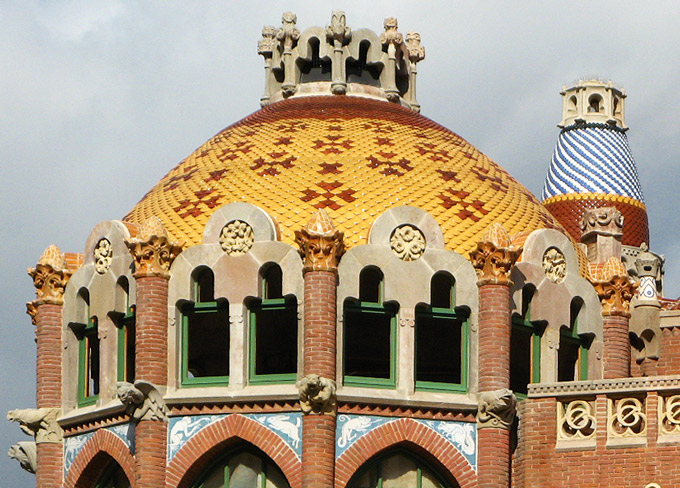
The Hospital is a sprawling complex and large tracts are cordoned off for renovation. Consequently, we could not approach much of it closely. To compensate, the following Internet shots are included:
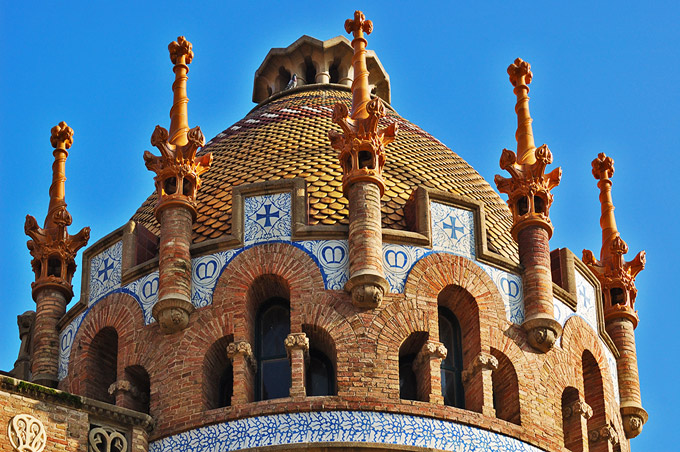
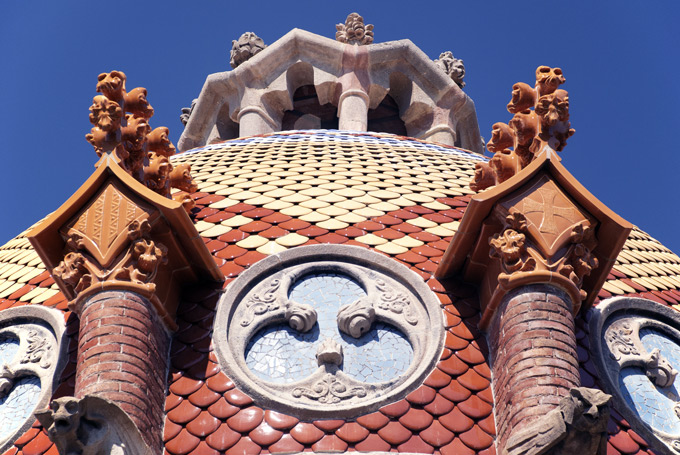
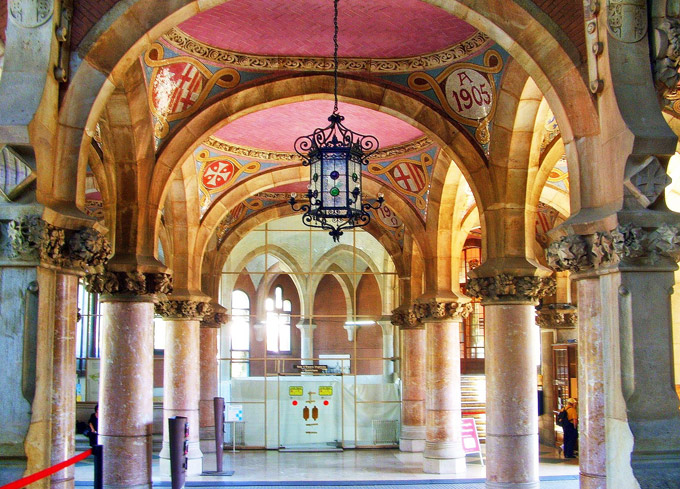
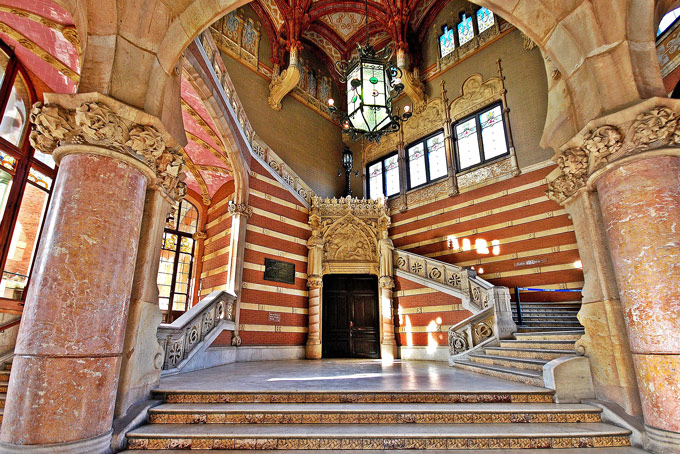
When renovation is complete, we are certain this will be another of Barcelona’s star attractions.
The Palau de la Música Catalana --- which many regard as Montaner's masterpiece --- is in the historic part of Barcelona. This magnificent concert hall offers 300 performances a year in all types of music.
In earlier times, just before entering the building, patrons might have looked up and admired this facade:
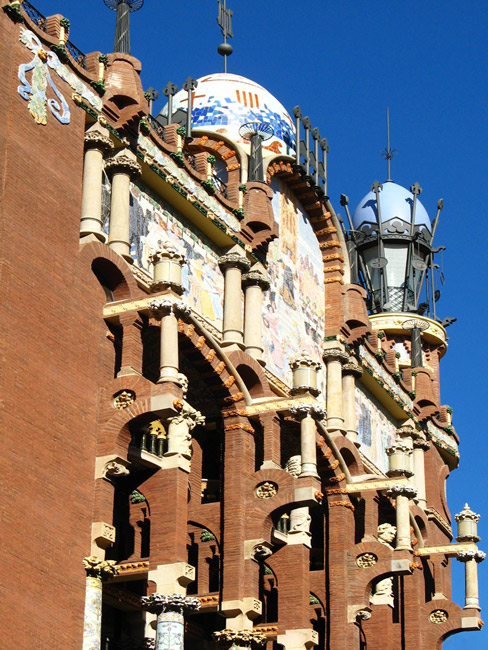
Below it, the original ticket window still marks the former entrance:
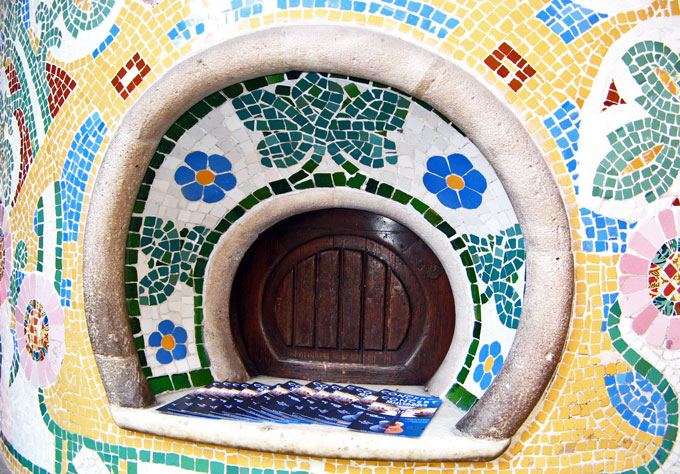
Entry to the Palau is now via a modern extension, which features some fancy brickwork. Amazingly, the image of a tree has been embossed into the building’s exterior:
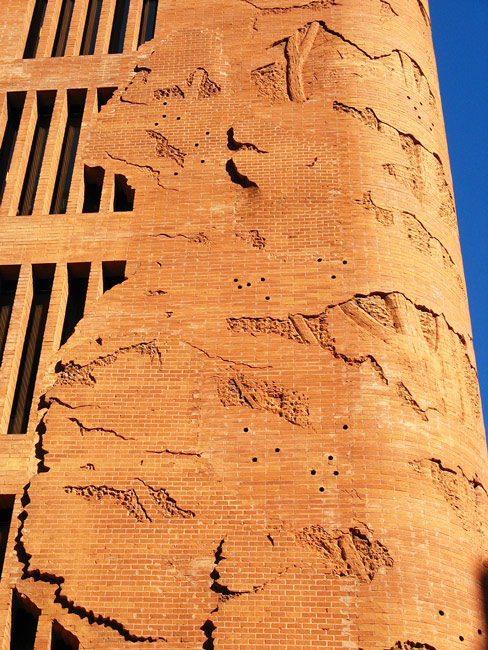
The concert hall itself is very impressive. The centerpiece of its stained-glass skylight is a striking inverted dome. During daylight hours, the skylight and the stained-glass windows provide sufficient natural light for illumination.
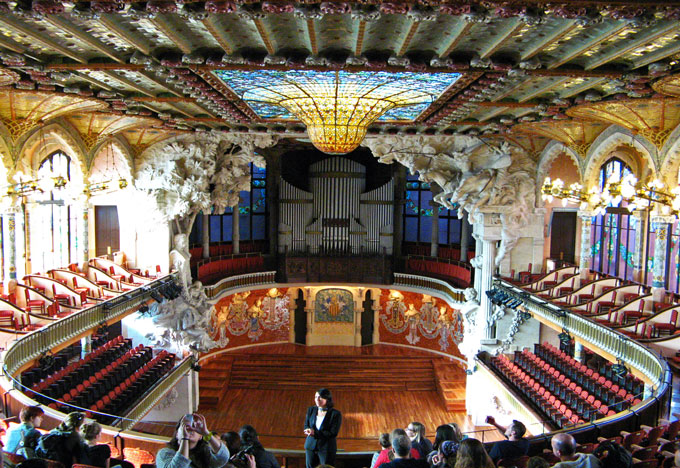
The hall was completed in 1908 for a Catalan choral society and can accommodate 2,200 patrons.
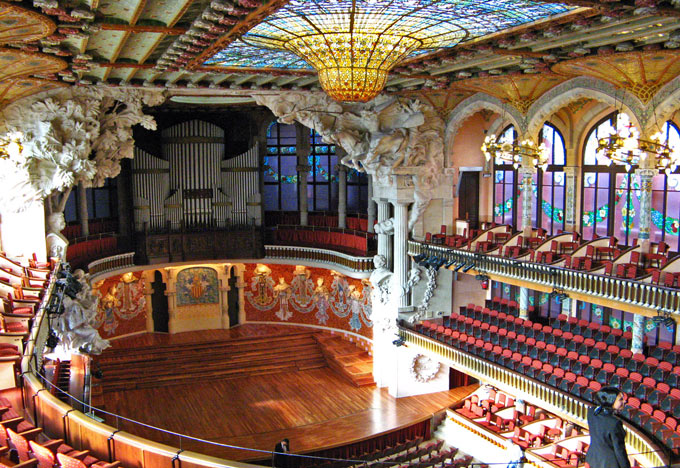
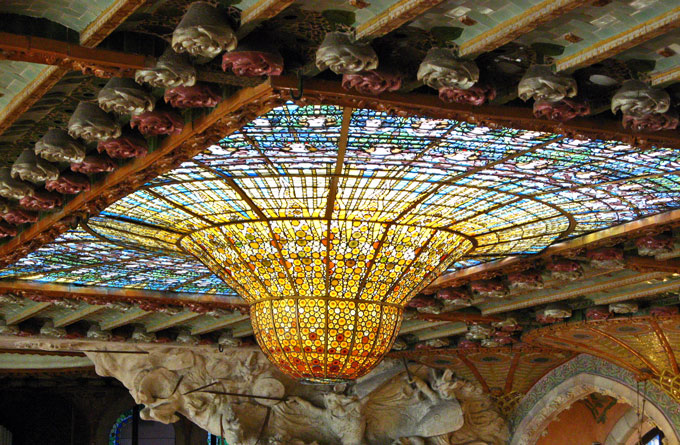
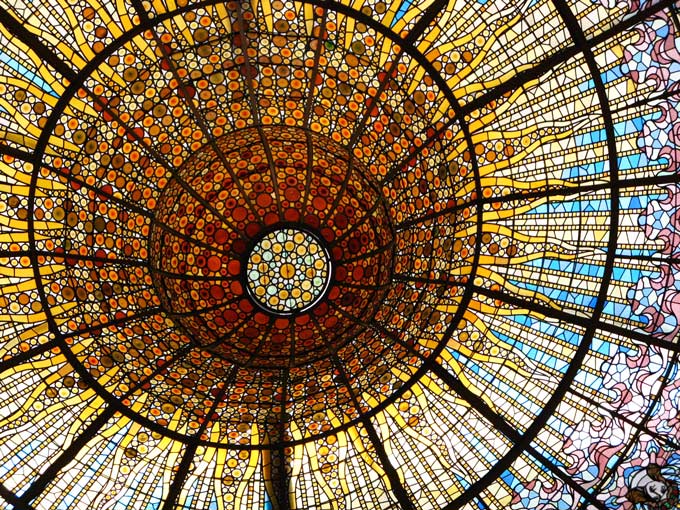
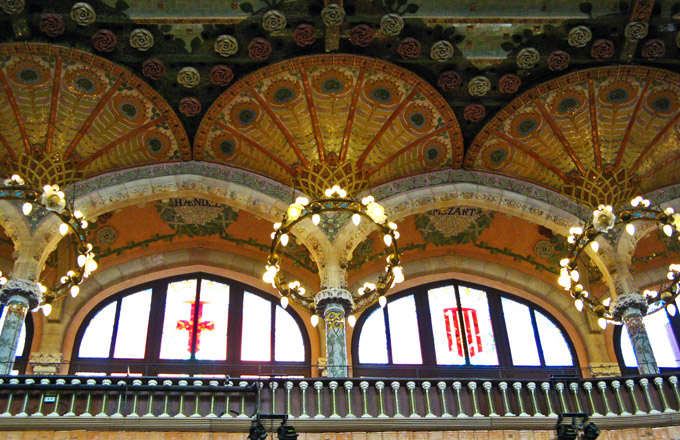
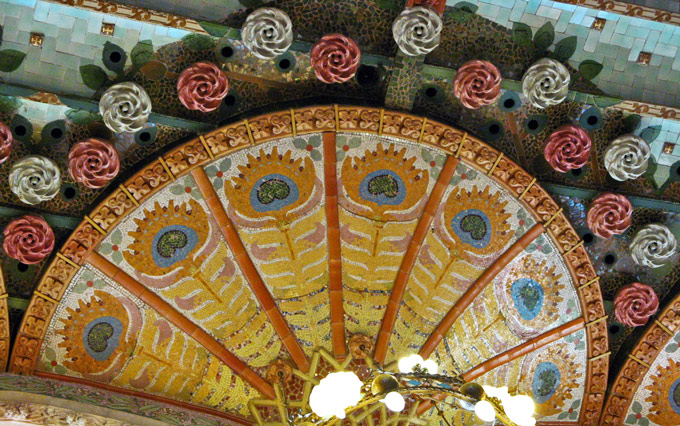
From the lower level of the hall, the figures at the back of the stage are easier to appreciate. The 18 young women depicted are popularly known as the muses:
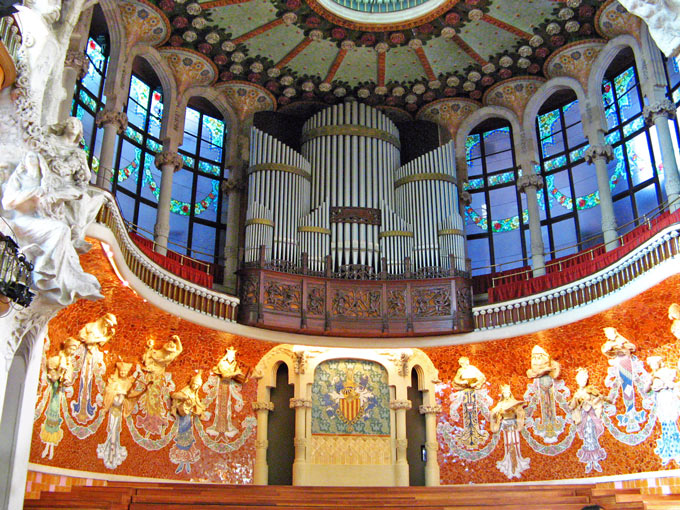
Each is playing a different musical instrument and is attired differently. The monotone upper bodies of the women are carved while their lower bodies are created by colorful mosaics that form part of the wall:
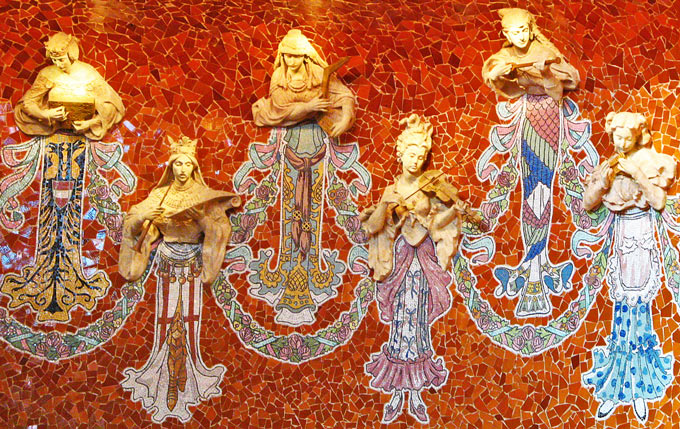
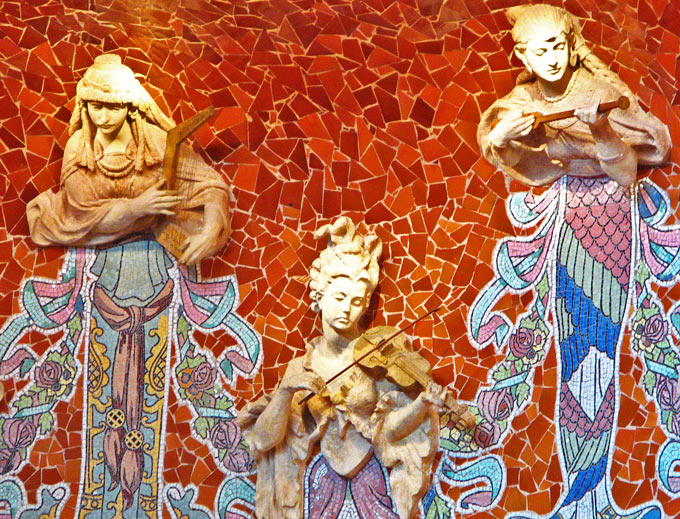
Our tour of the Palau was on Halloween, the last possible day before we headed home. Obviously, we had saved one of Barcelona’s best attractions for last.


















